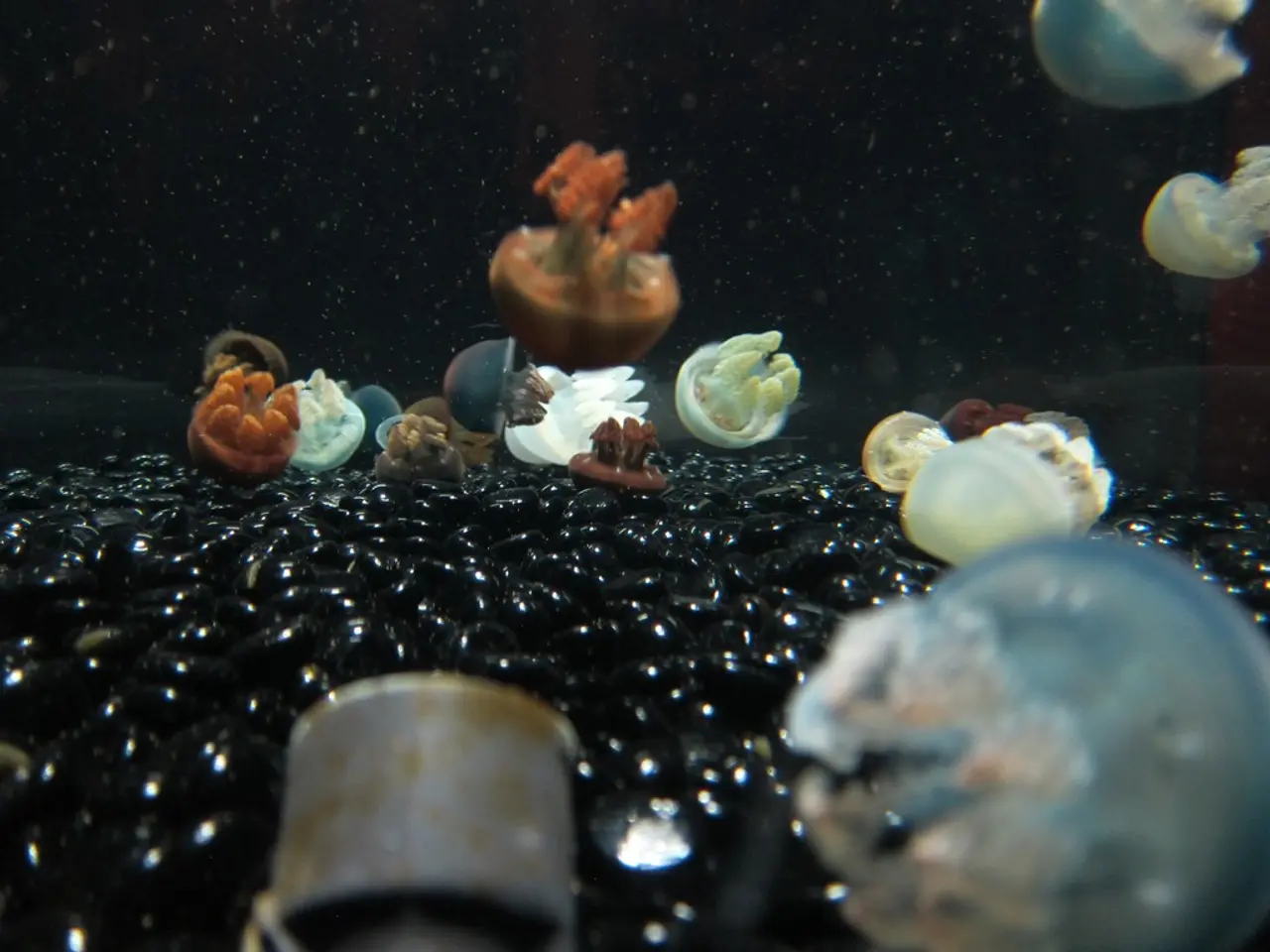Delaware beach visitors experiencing a surge in encounters with jellyfish
In recent years, jellyfish blooms have become a common sight from Maine to Florida, a phenomenon primarily driven by warming ocean waters [1][2][3][4][5]. This climate-driven ocean warming provides ideal conditions for jellyfish growth and reproduction, leading to larger and more frequent blooms.
Along the Atlantic coast, reports of increased jellyfish numbers have been particularly noticeable. Species such as lion’s mane jellyfish, sea nettles, and moon jellyfish have been spotted in higher-than-usual numbers, coinciding with high jellyfish sting incidents and unusual populations along these shorelines [1][3][4].
The warmer waters have resulted in faster growth and reproduction rates, extended breeding seasons, and more favorable conditions for both jellyfish polyps and medusae stages. This, in turn, leads to more frequent and intense jellyfish blooms, posing increased encounters with humans in coastal waters [1][2][3][4][5].
Beachgoers along the Delaware coast have been experiencing an unexpected surge in jellyfish stings this summer. Lewes Beach reported a fourfold increase in stings compared to 2024, and Fenwick Island State Park recently reported 92 stings on a single July day. Three lifeguards were even taken to urgent care after swimming in jellyfish-infested waters [1].
Lifeguards at Lewes Beach have started carrying vinegar solutions to help ease pain from jellyfish stings. However, some research suggests that vinegar solutions may cause microscopic venom-coated barbs to discharge [1].
Jellyfish can harm ecosystems and marine industries by consuming both plankton and fish larvae, with few natural predators. More research is needed to assess the ecological ramifications of jellyfish blooms and improve safety advisories [1].
Delaware State Beach Patrol has started tracking jellyfish stings this year due to the rise in cases. Beach patrol captains have reported a dramatic increase in jellyfish activity and stings in July, the most seen in recent memory.
Despite the inconvenience and potential dangers, not all encounters with jellyfish are negative. A third-grade nephew of Massachusetts resident Kathy Malloy-Harder had to endure a jellyfish sting but expressed interest in returning to the beach after the incident.
It's important to remember that while jellyfish can cause minor irritation and pain, severe allergic reactions can lead to symptoms such as nausea, vomiting, and trouble breathing. If you experience a severe jellyfish sting or an allergic reaction, seek medical attention immediately, and lifeguards can assist in such cases.
As we continue to grapple with the effects of climate change, the increase in jellyfish blooms is a stark reminder of the unpredictable and potentially harmful consequences. Stay informed, be cautious, and enjoy the beach responsibly.
References: [1] Delaware Online. (2021). Delaware beaches are experiencing an increase in jellyfish stings. Retrieved from https://www.delawareonline.com/story/news/2021/07/19/delaware-beaches-experiencing-increase-jellyfish-stings/8039115002/
[2] National Geographic. (2021). Jellyfish blooms are becoming more common along the East Coast. Retrieved from https://www.nationalgeographic.com/science/article/jellyfish-blooms-east-coast
[3] The Weather Channel. (2021). Jellyfish stings on the rise along the East Coast. Retrieved from https://weather.com/news/news/2021-07-20-jellyfish-stings-east-coast
[4] The New York Times. (2021). Jellyfish blooms are becoming more common along the East Coast. Retrieved from https://www.nytimes.com/2021/07/20/us/jellyfish-blooms-east-coast.html
[5] NOAA. (2021). Jellyfish blooms in the Gulf of Mexico. Retrieved from https://oceanservice.noaa.gov/news/23/06/jellyfish-blooms-gulf-mexico.html
- The rise in jellyfish blooms, which are more frequent due to warming ocean waters and climate change, is not limited to the Atlantic coast but also extends to health and wellness concerns for beachgoers as the increased jellyfish populations can lead to higher numbers of jellyfish stings.
- Beyond affecting marine environments, environmental science indicates that jellyfish blooms could have far-reaching impacts, potentially threatening delicate ecosystems and marine industries through overconsumption of plankton and fish larvae, as well as posing health risks to humans in terms of swim safety and potentially severe allergic reactions.




